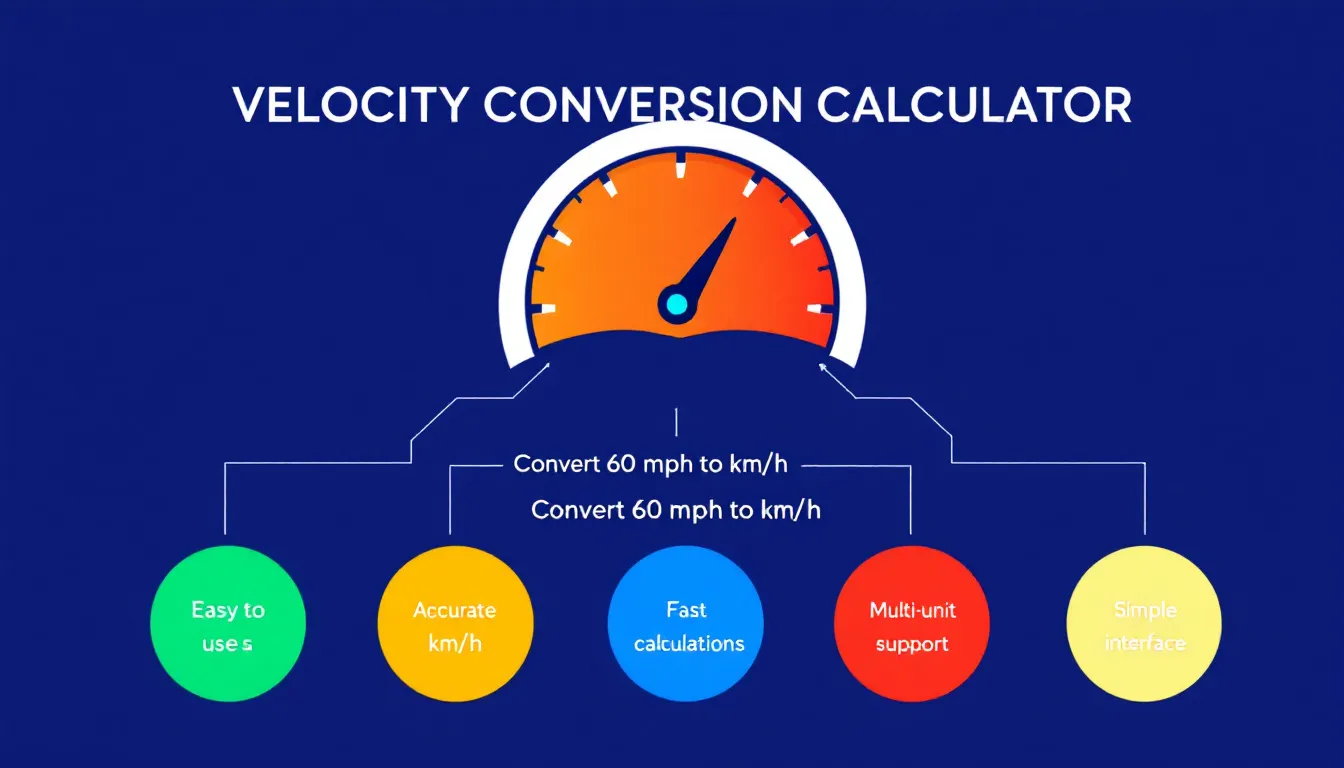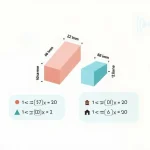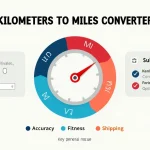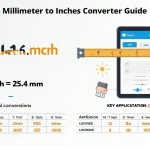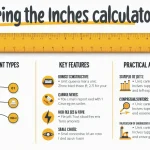Velocity Conversion Calculator
Is this tool helpful?
How to Use the Velocity Conversion Calculator Effectively
Our velocity conversion calculator is a powerful tool designed to help you quickly and accurately convert between various units of speed. Here’s a step-by-step guide on how to use it effectively:
- Enter the velocity value: In the “Velocity Value” field, input the numerical value of the speed you want to convert. For example, enter “75” if you want to convert 75 units of speed.
- Select the input unit: From the “Input Unit” dropdown menu, choose the unit of measurement for your entered velocity. For instance, if you entered 75 kilometers per hour, select “km/h” from the list.
- Choose the output unit: In the “Output Unit” dropdown, select the unit you want to convert your velocity to. For example, if you want to know the equivalent speed in miles per hour, choose “mph”.
- Set decimal precision (optional): If you need a specific number of decimal places in your result, enter a value between 0 and 10 in the “Decimal Precision” field. If left blank, the calculator will use a default precision of 2 decimal places.
- Click “Convert”: After entering all the required information, click the “Convert” button to see your result.
The calculator will display the converted velocity value in the selected output unit below the form.
Sample Inputs and Results
Let’s look at two example conversions:
- Example 1:
- Velocity Value: 300
- Input Unit: km/h (kilometers per hour)
- Output Unit: m/s (meters per second)
- Decimal Precision: 3
- Result: 300 km/h = 83.333 m/s
- Example 2:
- Velocity Value: 55
- Input Unit: kn (knots)
- Output Unit: mph (miles per hour)
- Decimal Precision: 1
- Result: 55 kn = 63.3 mph
Introduction to the Velocity Conversion Calculator
Velocity, a fundamental concept in physics and everyday life, is the measure of how fast an object is moving in a particular direction. However, different fields and regions often use various units to express velocity, which can lead to confusion and the need for frequent conversions. Our velocity conversion calculator is designed to address this challenge by providing a quick, accurate, and user-friendly tool for converting between multiple velocity units.
Definition and Purpose
The velocity conversion calculator is a specialized online tool that allows users to convert velocity measurements from one unit to another. It supports a wide range of velocity units, including meters per second (m/s), kilometers per hour (km/h), miles per hour (mph), knots (kn), feet per second (ft/s), and even more specialized units like Mach number and the speed of light (c).
The primary purpose of this calculator is to simplify the process of velocity conversion, eliminating the need for manual calculations and reducing the risk of errors. Whether you’re a student studying physics, an engineer working on a project, a pilot planning a flight, or simply curious about speed conversions, this tool can save you time and ensure accuracy in your calculations.
Benefits of Using the Velocity Conversion Calculator
Using our velocity conversion calculator offers numerous advantages:
- Time-saving: Instantly convert between various velocity units without the need for manual calculations or memorizing conversion factors.
- Accuracy: Eliminate human error in calculations, especially when dealing with complex conversions or large numbers.
- Versatility: Convert between a wide range of velocity units, including less common ones, all in one place.
- Educational value: Helps students and professionals understand the relationships between different velocity units.
- Customizable precision: Adjust the number of decimal places in the result to suit your specific needs.
- User-friendly interface: Easy-to-use design makes velocity conversions accessible to everyone, regardless of technical background.
- Mobile compatibility: Access the calculator on various devices, making it convenient for on-the-go use.
How the Velocity Conversion Calculator Addresses User Needs
Our velocity conversion calculator is designed to address several key user needs and solve specific problems related to speed and velocity calculations:
1. Cross-disciplinary Conversions
Different fields often use different units of velocity. For instance, while physicists might prefer meters per second (m/s), drivers are more familiar with kilometers per hour (km/h) or miles per hour (mph). Our calculator bridges this gap, allowing for easy conversions between these units.
2. International Standardization
With globalization, there’s an increasing need to convert between metric and imperial units. Our calculator seamlessly handles conversions between units like kilometers per hour (km/h) and miles per hour (mph), facilitating international communication and understanding.
3. Specialized Applications
Some professions require the use of specialized velocity units. For example, aviation and marine navigation often use knots (kn), while aerospace engineering might involve Mach numbers. Our calculator includes these specialized units, making it valuable across various industries.
4. Educational Support
Students studying physics or engineering often need to convert between different velocity units to solve problems or understand concepts. Our calculator serves as an educational tool, helping students check their manual calculations and understand the relationships between different units.
5. High-Precision Calculations
In scientific research or engineering applications, high precision is often required. Our calculator allows users to specify the number of decimal places in the result, ensuring the level of precision needed for their specific application.
Example Calculations
Let’s look at some example calculations to illustrate how the calculator addresses these needs:
Example 1: Converting from metric to imperial for international communication
A European car manufacturer lists a vehicle’s top speed as 250 km/h. To market this car in the United States, they need to convert this to miles per hour.
- Input: 250 km/h
- Output Unit: mph
- Result: 250 km/h ≈ 155.34 mph
This quick conversion allows for clear communication of the vehicle’s performance to an American audience.
Example 2: Converting between scientific and everyday units
A physics textbook mentions that sound travels at approximately 343 m/s in air at room temperature. To make this more relatable to students, we can convert it to km/h.
- Input: 343 m/s
- Output Unit: km/h
- Result: 343 m/s ≈ 1234.8 km/h
This conversion helps students visualize the speed of sound in terms they’re more familiar with in everyday life.
Example 3: High-precision conversion for engineering applications
An aerospace engineer needs to convert a missile’s speed from Mach 3.5 to meters per second with high precision for a simulation.
- Input: 3.5 Mach
- Output Unit: m/s
- Decimal Precision: 6
- Result: 3.5 Mach ≈ 1191.015000 m/s
This high-precision conversion ensures accurate data for the engineer’s simulation.
Practical Applications of the Velocity Conversion Calculator
The velocity conversion calculator has a wide range of practical applications across various fields and everyday scenarios. Let’s explore some of these use cases:
1. Transportation and Logistics
- International Shipping: Logistics companies can use the calculator to convert ship speeds from knots to kilometers per hour or miles per hour for route planning and estimated arrival times.
- Aviation: Pilots and air traffic controllers can convert between knots, miles per hour, and kilometers per hour for flight planning and communication.
- Automotive Industry: Car manufacturers can easily convert vehicle speeds between mph and km/h for marketing materials in different countries.
2. Science and Research
- Physics Experiments: Researchers can convert between various units when comparing experimental results or preparing reports for international journals.
- Astronomy: Astronomers can convert cosmic velocities between different units, including fractions of the speed of light.
- Environmental Science: Wind speeds can be converted between different units for meteorological studies or renewable energy research.
3. Sports and Fitness
- Running and Cycling: Athletes can convert their speeds between minutes per mile, kilometers per hour, and meters per second for training and performance analysis.
- Swimming: Coaches can convert swim speeds between different units to compare performances across different pool lengths (yards vs. meters).
- Winter Sports: Skiers and snowboarders can convert their speeds between mph and km/h for consistent understanding across international competitions.
4. Education
- Physics Classes: Students can use the calculator to check their manual conversions and gain a better understanding of velocity units.
- Engineering Courses: The calculator can assist in solving complex problems involving multiple unit conversions.
- Driver’s Education: Instructors can use the tool to teach about speed limits in different countries and their equivalent values.
5. Engineering and Manufacturing
- Automotive Engineering: Engineers can convert between different velocity units when designing and testing vehicle components.
- Aerospace Industry: The calculator can be used to convert between Mach numbers and other velocity units for aircraft and spacecraft design.
- Industrial Machinery: Manufacturers can convert machine operating speeds between different units for international markets.
6. Travel and Tourism
- International Driving: Tourists can convert speed limits between mph and km/h when driving in foreign countries.
- Cruise Planning: Travelers can convert ship speeds from knots to more familiar units to estimate travel times between ports.
- High-Speed Rail: Passengers can convert train speeds between different units to compare with other modes of transportation.
Real-World Example: International Space Station (ISS) Speed Conversion
Let’s use our velocity conversion calculator for a real-world example involving the International Space Station (ISS).
The ISS orbits Earth at an average speed of about 7.66 kilometers per second. An aerospace enthusiast wants to know this speed in:
- Miles per hour (mph)
- Mach number
Using our calculator:
Conversion 1: km/s to mph
- Input: 7.66 km/s
- Output Unit: mph
- Result: 7.66 km/s ≈ 17,136.21 mph
Conversion 2: km/s to Mach number
- Input: 7.66 km/s
- Output Unit: Mach
- Result: 7.66 km/s ≈ Mach 22.51
These conversions help put the incredible speed of the ISS into perspective, showing that it travels at over 17,000 mph or more than 22 times the speed of sound!
Frequently Asked Questions (FAQ)
1. What is velocity?
Velocity is a vector quantity that measures the rate and direction of motion. It is typically expressed as the distance traveled per unit of time, such as meters per second (m/s) or miles per hour (mph).
2. Why are there so many different units for velocity?
Different units for velocity have evolved due to various historical, cultural, and practical reasons. Some units are more suitable for certain applications or are traditionally used in specific fields or regions.
3. What’s the difference between speed and velocity?
Speed is a scalar quantity that measures how fast an object is moving, regardless of direction. Velocity, on the other hand, is a vector quantity that includes both speed and direction of motion.
4. How do I convert between metric and imperial velocity units?
Our velocity conversion calculator handles these conversions automatically. Simply input your value, select the input unit (e.g., km/h), and choose the desired output unit (e.g., mph).
5. What is a knot, and why is it used?
A knot is a unit of speed equal to one nautical mile per hour, approximately 1.15078 mph or 1.852 km/h. It’s commonly used in maritime and air navigation because it conveniently relates to latitude and longitude coordinates.
6. What does Mach number represent?
Mach number represents the ratio of an object’s speed to the speed of sound in the surrounding medium. Mach 1 is equal to the speed of sound, which is approximately 343 m/s or 767 mph at sea level and 20°C (68°F).
7. How accurate are the conversions in this calculator?
Our calculator uses precise conversion factors and allows you to specify the number of decimal places for the result, ensuring high accuracy for most practical applications.
8. Can this calculator convert between units of acceleration?
This particular calculator is designed for velocity conversions only. Acceleration, which measures the rate of change of velocity, would require a separate calculator with different units and conversion factors.
9. Why do we use ‘c’ to represent the speed of light?
The symbol ‘c’ comes from the Latin word “celeritas,” meaning “swiftness” or “speed.” It’s used as a constant in physics to represent the speed of light in a vacuum, approximately 299,792,458 meters per second.
10. How can I remember common velocity conversion factors?
While our calculator eliminates the need to memorize conversion factors, some useful approximations to remember include:
- 1 m/s ≈ 3.6 km/h
- 1 mph ≈ 1.61 km/h
- 1 knot ≈ 1.15 mph or 1.85 km/h
11. Can this calculator be used for relativistic velocities?
While the calculator can convert between units involving ‘c’ (the speed of light), it doesn’t account for relativistic effects. For velocities approaching the speed of light, relativistic calculations would be necessary.
12. How does altitude affect velocity measurements?
Altitude can affect certain velocity measurements, particularly those related to air speed. For example, the speed of sound (and thus Mach number) decreases with increasing altitude due to lower air temperature and pressure. However, for most everyday conversions, these effects are negligible.
13. What’s the fastest man-made object, and how fast is it in different units?
As of 2023, the fastest man-made object is the Parker Solar Probe, which reached a speed of about 163 km/s (586,800 km/h, 364,621 mph, or 0.064% of the speed of light) during its closest approach to the Sun. You can use our calculator to convert this speed into various units!
14. How do I convert between different time-based velocity units (e.g., km/h to km/s)?
Our calculator handles these conversions automatically. For manual calculations, you’d need to account for the time difference. For example, to convert from km/h to km/s, divide by 3600 (the number of seconds in an hour).
15. Can this calculator be used for angular velocity conversions?
No, this calculator is designed for linear velocity conversions. Angular velocity, which measures rotational speed, uses different units like radians per second or revolutions per minute (RPM) and would require a separate conversion tool.
Important Disclaimer
The calculations, results, and content provided by our tools are not guaranteed to be accurate, complete, or reliable. Users are responsible for verifying and interpreting the results. Our content and tools may contain errors, biases, or inconsistencies. We reserve the right to save inputs and outputs from our tools for the purposes of error debugging, bias identification, and performance improvement. External companies providing AI models used in our tools may also save and process data in accordance with their own policies. By using our tools, you consent to this data collection and processing. We reserve the right to limit the usage of our tools based on current usability factors. By using our tools, you acknowledge that you have read, understood, and agreed to this disclaimer. You accept the inherent risks and limitations associated with the use of our tools and services.
